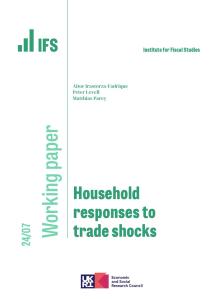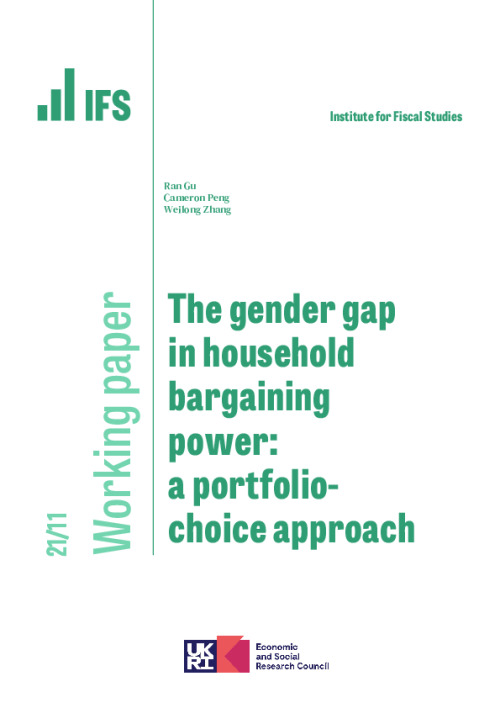Downloads
We quantify how bargaining power is distributed when spouses make financial decisions together. We build a model in which each spouse has a risk preference and must bargain with each other to make asset decisions for the household. By structurally estimating the model with longitudinal data from Australian households, we show that the average household's asset allocation reflects the husband's risk preference 44% more than the wife's. This gap in bargaining power is partially explained by gender differences in income and employment status, but is also due to gender effects. We provide further evidence that links the distribution of bargaining power to views on gender norms in the cross-section.
Authors

Research Associate University of Essex
Ran is an IFS Research Associate and a Lecturer at the University of Essex interested in understanding household and firm behaviour.

Cameron Peng

Weilong Zhang
Working Paper details
- DOI
- 10.1920/wp.ifs.2021.1121
- Publisher
- Institute for Fiscal Studies
Suggested citation
R, Gu and C, Peng and W, Zhang. (2021). The gender gap in household bargaining power: a portfolio-choice approach. London: Institute for Fiscal Studies. Available at: https://ifs.org.uk/publications/gender-gap-household-bargaining-power-portfolio-choice-approach (accessed: 20 April 2024).
More from IFS
Understand this issue

Sure Start achieved its aims, then we threw it away
15 April 2024

Social mobility and wealth
12 December 2023

How important is the Bank of Mum and Dad?
15 December 2023
Policy analysis

Major challenges for education in Wales
21 March 2024

Sliding education results and high inequalities should prompt big rethink in Welsh education policy
21 March 2024

Living standards since the last election
21 March 2024
Academic research

Labour market inequality and the changing life cycle profile of male and female wages
15 April 2024

There and back again: women’s marginal commuting costs
2 April 2024

Household responses to trade shocks
26 March 2024
